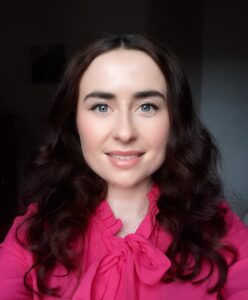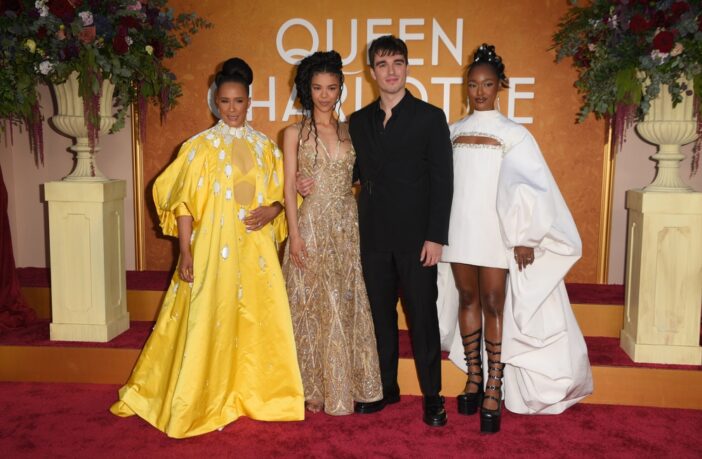Fans of the racy Netflix period drama series ‘Bridgerton’ are patiently waiting to see the spin-off prequel series ‘Queen Charlotte: a Bridgerton Story’ – so we asked an expert to tell us about the young queen.

Dr Natalee Garrett
We spoke to Dr Natalee Garrett, a history lecturer at The Open University, who has researched the 18th Century real Queen Charlotte and discovered a woman of brilliant intelligence, deep religious faith and a loyal wife.
The Queen Consort of King George III, mother of his 15 children, 13 of whom survived in a time where one in every three did not live longer than their fifth birthday, Charlotte was from Mecklenburg Strelitz in Germany.
Natalee says just before George became king in 1761, finding a wife was his first priority:
“Charlotte wasn’t on the original list of prospective brides, but the man who was charged with investigating these potential brides put her on the second draft of the list as a sort of wild card.”
Married the day after she met George
Yet a 17-year-old Charlotte was chosen and once she arrived after weeks at sea that same year, she married him the day after she stepped on English shores, never to return to her native Germany.
One of the ways she fitted the bill for George, says Natalee, was because she was from the East Germanic state where people were protestant – and the next queen consort had to be a protestant.
While it was a very unromantic, pragmatic way to pick a wife it turned out to be a very successful marriage and she remained Queen Consort for 57 years until her death in 1818 at the age of 74.
“Evidence suggests they had a good relationship and she was very deferential to him. She understood that he was the king, not just her husband,” says Natalee.
Charlotte ‘no pushover’
In 1788, George became mentally ill and experts said it was permanent:
“Charlotte was no pushover. She was very determined that it was temporary, and she was right on that occasion.”
Natalee says evidence reveals she kept the wheels of the family in motion ready for his return, and she was poised to play an important part if a Regency was needed.
It was a time when Queen Charlotte was particularly significant in society as Princess Caroline of Brunswick, the wife of the flamboyant Prince Regent, later King George IV, spent a long time abroad to escape spending time with the husband she did not get on with, so Charlotte was a very visible royal.
“As a royal marriage goes, I think it was a pretty solid one. We know that in their private moments they were often very affectionate to each other… kissing each other’s hands. There are many other affectionate little anecdotes and stories from courtiers.”
Parallels with today’s Royals
Natalee says there are parallels with today’s Royal family in the way they operated in society:
“They were sympathetic to people; very good at publicising themselves. They did little walkabouts, and would visit manufacturing companies or travel around different spa towns. They were quite good at being visible and a lot of what they did feeds into what the Royal family do now in terms of patronage.”
While King George was born in London he was from the House of Hanover family and his two predecessors were German, but he was keen to emphasise that he was British above anything else.
“Charlotte would make a point of wearing British fabrics and would patronise a lot of British companies such as Wedgwood, so they were very good at creating a royal image together.
“They appealed to a lot of people and that helped the monarchy direct itself in a new way. Queen Victoria, their granddaughter, continued the family values notion,” said Natalee.
She added:
“I’ve looked at many of her letters and she’s such an interesting Queen and hasn’t had her moment in the spotlight since, so there’s a lot to be said about her. She deserves more attention.”
- ‘Queen Charlotte: a Bridgerton Story’ is out on Netflix on 4 May.
- Dr Natalee Garrett is writing a monograph about Queen Charlotte for publishers Routledge, part of a series on British Queen Consorts. Lives of Royal Women – Book Series – Routledge & CRC Press. The book is due for publication in 2025
Picture credit: Michael Mattes for Shutterstock



